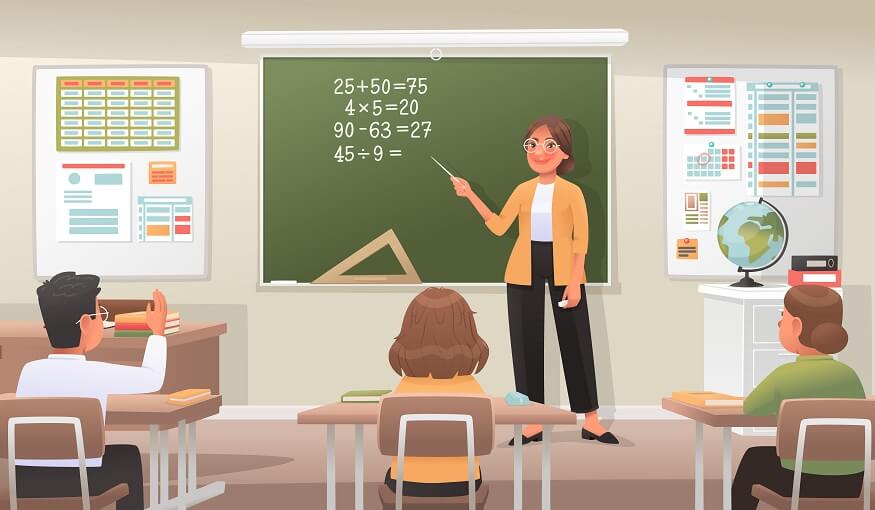Classroom Management Tips for RNPS Falna School

Effective classroom management is essential for creating an environment conducive to learning. At RNPS Falna, we recognize that teachers play a crucial role in shaping student behavior and learning outcomes. This comprehensive guide provides classroom management tips that can help teachers maintain order, enhance student engagement, and foster a positive learning atmosphere.
Understanding Classroom Management
Classroom management encompasses the strategies teachers use to maintain an organized, respectful, and productive classroom environment. Effective classroom management promotes positive behaviors, minimizes disruptions, and enhances academic performance.
Importance of Classroom Management
- Enhanced Learning Environment: A well-managed classroom creates a safe space where students can focus on learning without distractions.
- Improved Student Behavior: Consistent management strategies help inculcate discipline and respect among students.
- Teacher Satisfaction: Effective management reduces stress and burnout, leading to more fulfilling teaching experiences.
Key Classroom Management Strategies
1. Establish Clear Expectations
- Set Classroom Rules: Clearly defined rules help students understand what is expected of them. Display these rules prominently in the classroom.
- Consistent Enforcement: Apply rules consistently to avoid confusion and ensure fairness.
2. Build Positive Relationships
- Show Respect and Empathy: Treat students with respect and show empathy towards their concerns.
- Know Your Students: Learn about students’ interests, strengths, and challenges to build rapport.
3. Create an Engaging Learning Environment
- Interactive Lessons: Incorporate interactive activities to keep students engaged.
- Variety in Teaching Methods: Use a mix of lectures, discussions, and hands-on activities to cater to different learning styles.
4. Implement Effective Communication
- Open Dialogue: Encourage students to express their thoughts and concerns.
- Active Listening: Listen actively to students and address their issues promptly.
5. Foster a Sense of Responsibility
- Student Roles: Assign roles and responsibilities to students to promote accountability.
- Self-Assessment: Encourage students to reflect on their behavior and learning progress.
Detailed Classroom Management Tips
Setting Up the Classroom Environment
- Organized Seating Arrangements: Arrange seating to facilitate interaction and minimize distractions. Group desks for collaborative activities and ensure every student has a clear view of the board.
- Welcoming Atmosphere: Decorate the classroom with student work and inspirational posters to create a welcoming and motivating environment.
- Accessible Resources: Ensure that materials and resources are easily accessible to minimize disruptions during lessons.
Developing a Classroom Management Plan
- Define Classroom Procedures: Clearly outline procedures for common classroom activities such as entering the classroom, submitting homework, and transitioning between tasks.
- Behavioral Expectations: Develop a set of behavioral expectations that promote respect, responsibility, and active participation. Communicate these expectations to students regularly.
- Positive Reinforcement: Use positive reinforcement to encourage good behavior. This can include praise, rewards, and recognition for students who adhere to classroom rules.
Implementing Consistent Discipline Strategies
- Fair and Predictable Consequences: Establish a system of consequences for rule violations that is fair and predictable. Ensure that students understand the consequences of their actions.
- Proactive Management: Address potential disruptions before they escalate. Use non-verbal cues and proximity to manage minor issues discreetly.
- Restorative Practices: Implement restorative practices that focus on repairing relationships and addressing the root causes of behavioral issues.
Engaging Students in Learning
- Differentiated Instruction: Adapt lessons to meet the diverse needs of students. Use a variety of instructional strategies to cater to different learning styles.
- Interactive Activities: Incorporate interactive activities such as group work, discussions, and hands-on projects to keep students engaged and motivated.
- Technology Integration: Utilize technology to enhance learning experiences. Interactive whiteboards, educational apps, and online resources can make lessons more engaging and interactive.
Building a Positive Classroom Culture
- Mutual Respect: Foster an environment of mutual respect where students feel valued and heard. Encourage respectful communication and collaboration.
- Celebrating Success: Celebrate individual and group achievements to boost morale and foster a sense of community. This can include academic accomplishments, good behavior, and participation in extracurricular activities.
- Empathy and Understanding: Teach students the importance of empathy and understanding. Encourage them to support each other and work together towards common goals.
Effective Classroom Communication
- Clear Instructions: Provide clear and concise instructions for all activities and assignments. Ensure that students understand what is expected of them.
- Active Listening: Practice active listening when students speak. Show interest in their ideas and provide constructive feedback.
- Open Feedback Channels: Create open channels for feedback where students can share their thoughts and concerns. Use this feedback to improve classroom management strategies.
Utilizing Data for Classroom Management
- Behavior Tracking: Track student behavior to identify patterns and address recurring issues. Use behavior charts, logs, or digital tools for efficient tracking.
- Academic Performance Monitoring: Monitor academic performance to identify students who may need additional support. Use assessment data to tailor instruction to meet individual needs.
- Regular Assessments: Conduct regular assessments to evaluate the effectiveness of classroom management strategies. Adjust strategies based on assessment results to ensure continuous improvement.
Conclusion
Effective classroom management is essential for creating a positive and productive learning environment. By implementing these tips and strategies, teachers at RNPS Falna can ensure that their classrooms are well-managed, engaging, and conducive to student success. Remember, consistency, empathy, and proactive planning are key to successful classroom management.
At RNPS Falna, we are committed to providing our teachers with the tools and support they need to excel in classroom management. By fostering a positive classroom culture, engaging students in learning, and maintaining clear communication, we can create an environment where every student thrives.
For more insights and resources on classroom management and teaching strategies, stay tuned to our blog and join our community of educators dedicated to excellence in education.
